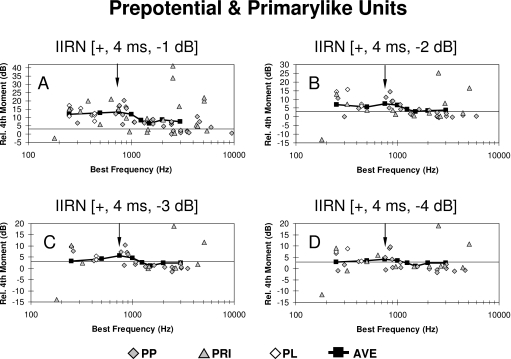Figure 6.
Scatter plots illustrating the relative fourth moment as a function of BF for the Primarylike group for delayed noise attenuations of −1 dB (A), −2 dB (B), −3 dB (C), and −4 dB (D). Gray diamonds show units having a prepotential (PP); gray triangles show units with primarylike PST histograms but without a prepotential (PRI). The open diamonds illustrate the relative fourth moments obtained from low BF phase-locked (PL) units that could not be characterized as either Primarylike or Chopper. The black squares and solid black line show the relative fourth moment averaged in one-octave bands (ave), centered at harmonic frequencies of the rippled noise (i.e., 250, 500, 750, 1000 Hz, etc). The one-octave bandpass averaging is similar to the one-octave bandpass filtering used to collect behavioral data (Shofner and Yost, 1997). For reference, the downward pointing arrow indicates the frequency of the third harmonic. Note that the ordinate changes scales in (A)–(D).

